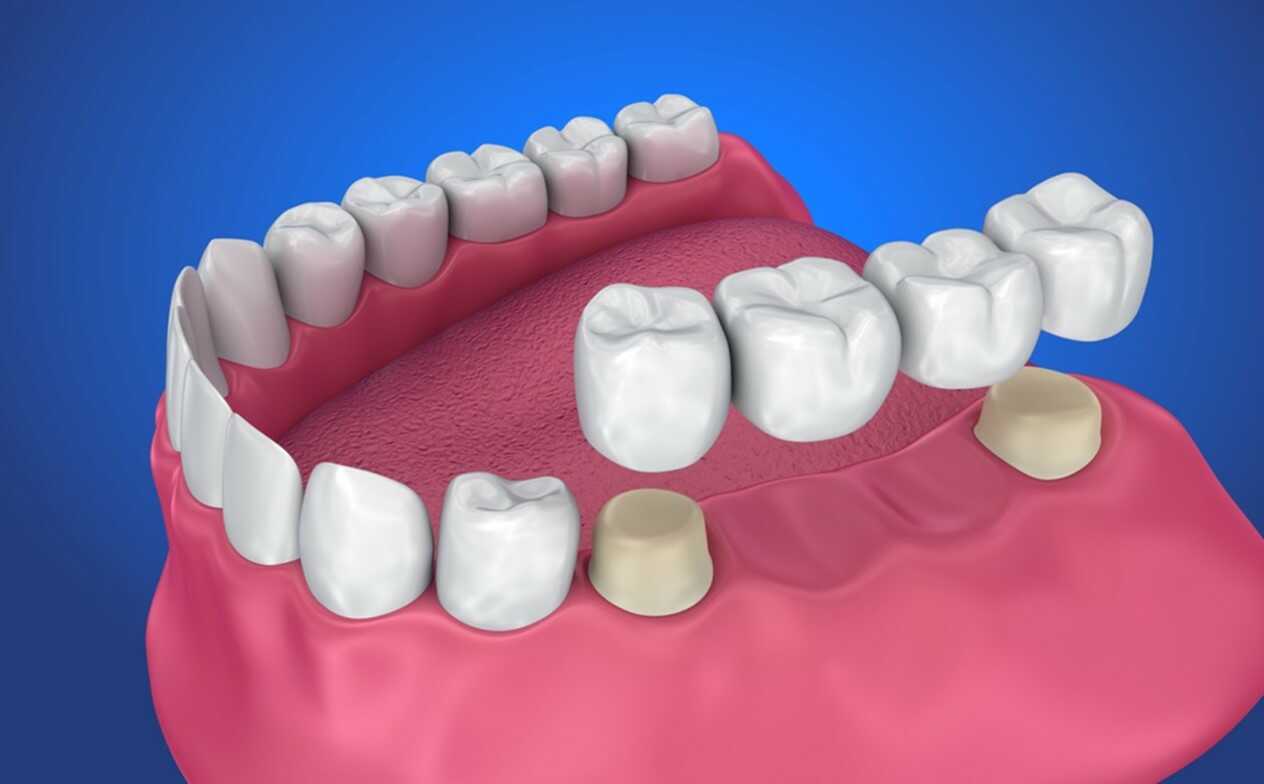Fixed Dental Bridges Norcross, GA
If you have lost teeth, you are at risk for bone deterioration, loose and shifting teeth and many other oral health problems. Our experienced dentists and team offer several options for replacing your missing teeth from fixed dental bridges to implant dentistry, and will work with you to design a treatment plan that will meet your needs, replacing your missing teeth so that you can continue to enjoy a healthy, beautiful smile.
What is a Fixed Dental Bridge?
A fixed dental bridge is a nonremovable prosthetic that fills the gap left by a missing tooth or several adjacent missing teeth. It consists of an artificial tooth, called a pontic, supported by crowns placed on the natural teeth or dental implants on either side of the space. Once bonded, the bridge looks and functions like natural teeth, helping you eat and speak with confidence. With proper care, a dental bridge can last for many years, making it a practical solution for those who want to restore their smile. It typically requires two appointments to complete a dental bridge – one at which the teeth are prepared and impressions taken, and one at which the final bridge is anchored in place.
Implants vs. Bridges
We see many patients that have existing, failing bridges—and they often request a new bridge. Here is why we don’t recommend bridges:
How do bridges work?

Bridges are a missing tooth solution that “bridge” two or more teeth together over a missing tooth. As you can see from the image, the bridge has to be anchored to at least two teeth in order to be properly affixed. Why is this bad?
- The two teeth that are the anchor points are often healthy teeth. Which means that we are weakening two teeth to replace one.
- If one of the teeth that are the bridge anchors have significant work, such as an existing root canal, it can be a weak support for the bridge, and can even break from chewing pressure.
- Bridges are hard to keep clean. We know patients sometimes neglect flossing. With a bridge, flossing is even more integral. Any bacteria or food debris that remains under a bridge can cause decay, which means the healthy teeth that were already shaved down can now further decay under the bridge.
- Once a tooth is missing, bone loss is inevitable. Even if you do a perfect job of cleaning under the bridge, once your tooth has been extracted your bone levels will decrease where that tooth was. The bone loss can also affect the surrounding teeth.



With implants, you don’t have to weaken healthy teeth or receive a new bridge every 5-10 years. Implants integrate into the bone and tend to last for a lifetime! Please read more about implants here.
Schedule Your Consultation
We invite you to call Vincent Dental today at 770-449-5999 to schedule your personal consultation with Dr. Daniel Vincent or Dr. Denise Ceron and learn more about fixed dental bridges in Norcross, Georgia. We are committed to finding the right type of tooth replacement option for your oral health and smile.
Frequently Asked Questions
What is a fixed dental bridge?
A fixed dental bridge replaces one or more missing teeth by anchoring an artificial tooth between two healthy teeth or implants. It restores function and appearance, helping you chew and speak comfortably.
How long does a dental bridge last?
With good oral hygiene, dental bridges can last 10-15 years. Regular dental visits are essential to monitor the health of the supporting teeth and the bridge’s condition.
What are the benefits of a fixed bridge?
A fixed bridge restores your smile, prevents surrounding teeth from shifting and improves chewing and speech. It provides a stable, nonremovable solution for missing teeth.
How do I care for a fixed bridge?
Brush and floss daily, including underneath the bridge. Our dentists may recommend a special floss threader to clean hard-to-reach areas, ensuring the bridge and surrounding teeth remain healthy.
